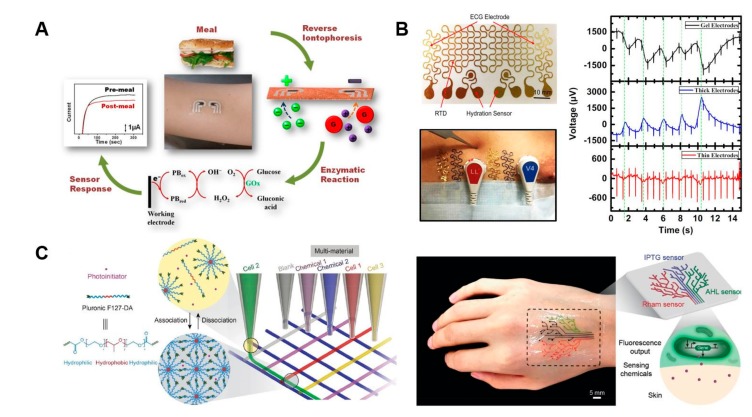Figure 6.
Schematic of implantable devices. (A) Tattoo-based glucose detection platform. (B) Photograph of an e-tattoo incorporating two electrocardiogram (ECG) electrodes, two hydration sensors and an RTD, all in filamentary serpentine (FS) layout. Synchronously measured ECG under skin indentation. (C) Schematic illustration shows direct hydrogel ink writing. The packing of Pluronic F127-DA micelles in the ink leads to a physically crosslinked hydrogel after printing; photoinitiator allows postphotocrosslinking of the living structures after printing; engineered bacterial cells are programmed to sense the signaling chemicals. 3D printed living tattoo is printed as a tree-like pattern on a thin elastomer layer and adhered to human skin. Reproduced with permission from Bandodkar, A.J.; et al. Tattoo-based noninvasive glucose monitoring: A proof-of-concept study; American Chemical Society, 2015 [98], Liu, X.; et al. 3D printing of living responsive materials and devices; Wiley, 2018 [101] and Wang, Y.; et al. Low-cost, μm-thick, tape-free electronic tattoo sensors with minimized motion and sweat artifacts; Springer Nature, 2018 [106].

